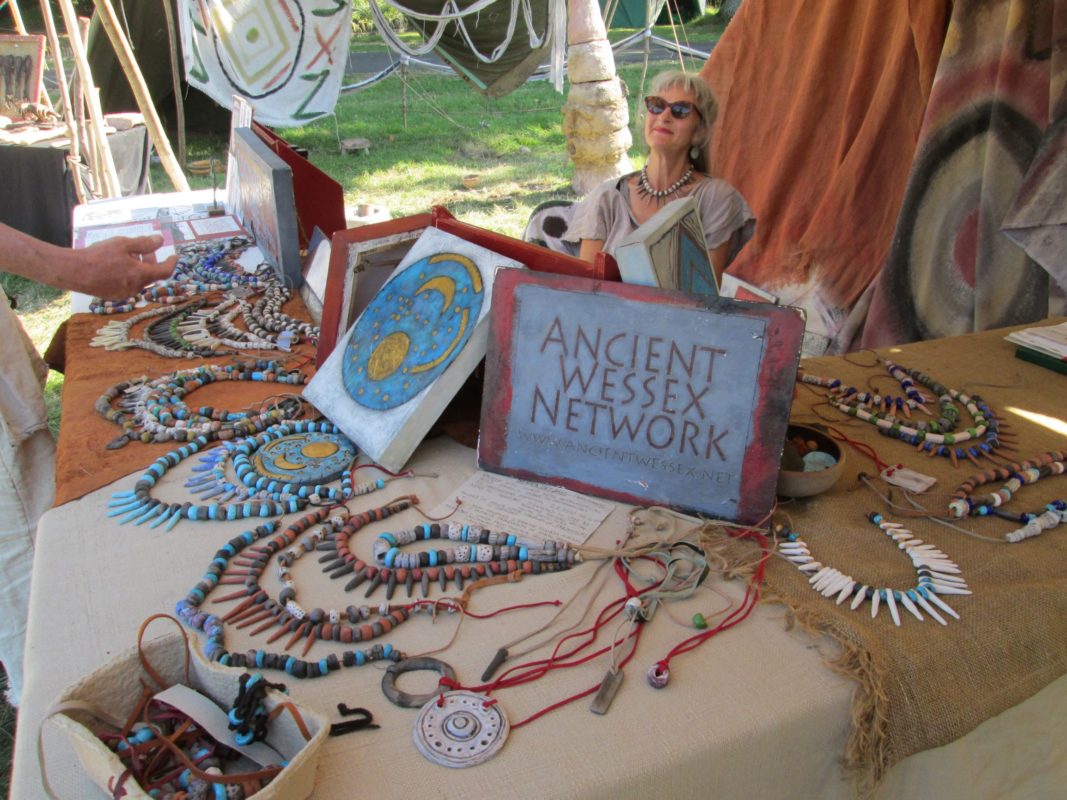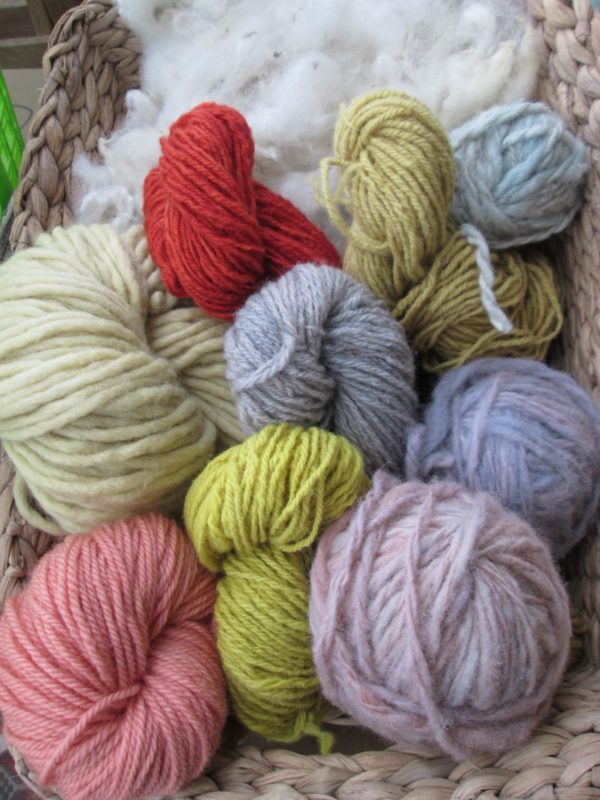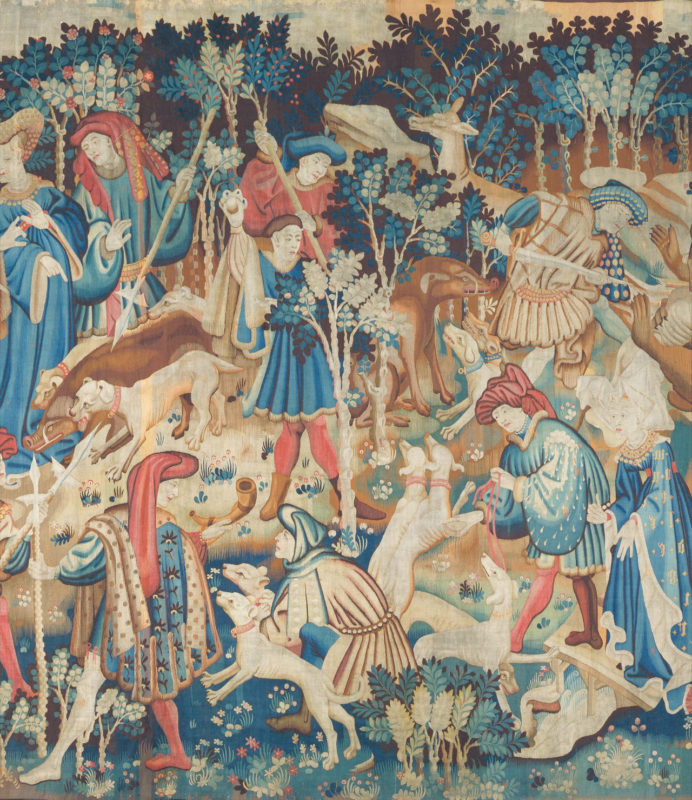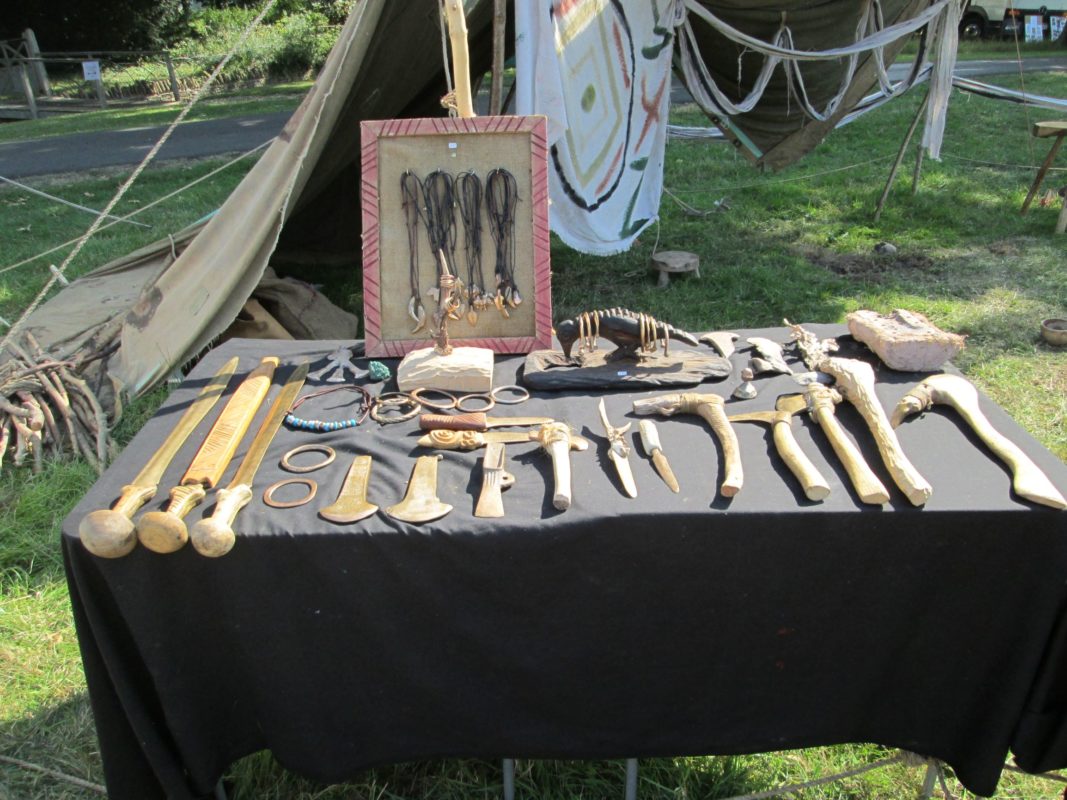About Dorset Wool, Information
Back to the Bronze Age and Ancient Dyed Textiles
I have been using homegrown plant dyes of all types for over 10 years and a couple of years ago I was losing my mojo. In March 2019, a chance discussion with Mark from the Ancient Wessex Network refired my interest, resulting in a change in direction. I am heading back to the Bronze Age and ancient dyed textiles.
Ancient Wessex Network
The Ancient Wessex Network is a group of pre-historic experimental archaeologists, who do demonstrations at various events around Dorset and beyond; including Corfe Castle, the Ancient Technology Centre and the Oak Fair. Yes, it is the bunch of people dressed in strange clothes at these events. We make a range of products from pre-history; including clay pots, Bronze firing, Neolithic flint napping, Viking jewellery and Bronze age bling. Interestingly, some of the jewellery found at a Turkish site dating from about 11,000 years old looks remarkably like the bling. What the group lacked was a textile specialist and that is where I came in.

Ancient Dyed Textile Research
My mojo returned and I started extensive investigation into prehistoric textiles. There are, not surprisingly, very few ancient textiles available, especially from the UK, especially from the Bronze age. Most I am sure have decayed. I also wonder if, because of poor preservation, they have been overlooked or not noticed in excavations. Fortunately, there is evidence of textiles on various peat bog bodies in Denmark and many examples have been found in the Salt mines at Halstatt in Austria. More recently, an early Bronze grave from southern Funen in Denmark has revealed even more evidence of early textiles. It may be a big leap to make using this evidence to base my work on, however similar pottery techniques were used all over Europe from about 2,800 BC. Therefore, I think it is safe to assume that similar textile technology was used.
Textiles are often single ply and HPLC (high pressure liquid chromatography) analysis has shown that they are dyed with Madder, Weld and Woad. All these plants grow natively in Northern Europe, especially chalk downland. Analysis of a purple nalbinding sock from Ancient Egypt showed that it was dyed with madder (red) and indigo (blue). It had been proposed that is was dyed with pigment from a Mediterranean mollusc.

Learning Bronze Age Textile Dye Techniques
As part of my exploration, I learnt more about the textiles and taught myself Nalbinding. This is a technique which pre-dates knitting and crochet. It is like knotting with a needle.
This has led to meeting some interesting people, most notably on a trip to London in August 2019. On the train journey, I was quietly Nalbinding when a voice behind me asked if I was Nalbinding. The lady asking was Niamh Whitfield, a well-known specialist in the early middle ages and Anglo-Saxon metal work. A happy hour or so of discussion on plant dyes and textiles from pre-history resulted from this chance meeting. How happy was I!
Ancient Dyed Textiles at the V&A
This trip was to the V&A where I spent ages looking at ancient textiles, of course. It is amazing to think that everything pretty much from the 3,000-year-old Egyptian nalbinding socks to the Bayeux tapestry to the Medieval tapestries from the 1300s are all dyed with just Madder, Weld and Woad. The tapestries are now blue, because the Weld has faded with light. Imagine all those blues as bright greens. Wow!

It becomes apparent that dyers from pre-history onwards could achieve all the colours of the rainbow using Madder (red), Weld (bright yellow) and Woad (blue). Sadly, many of the dyeing skills were lost in the 1800s with the advent of artificial dyes. Fortunately, there are more people willing to learn how to achieve these colours.
I now focus on the dyes and techniques using these three dyes, which I dub the “Ancient Three”. I am now able to produce an almost complete range of colours on my yarns and carded fibre.
My journey continues back to the Bronze Age and beyond….

